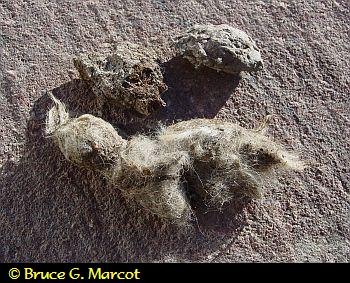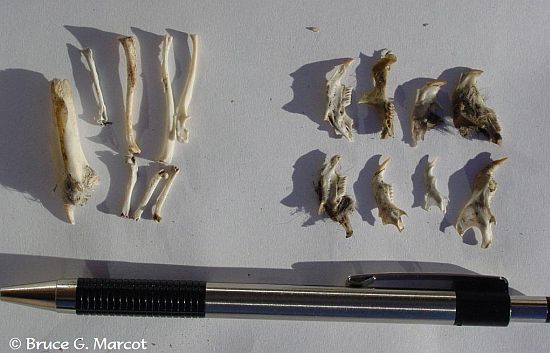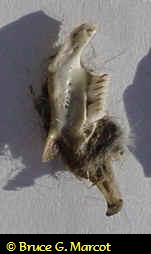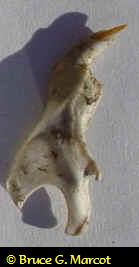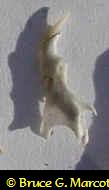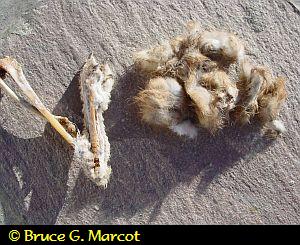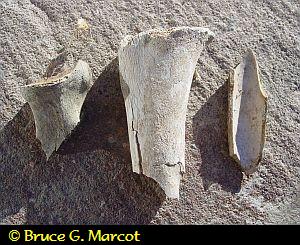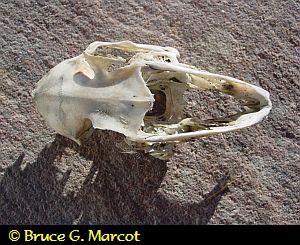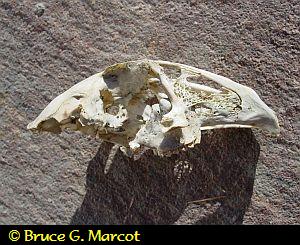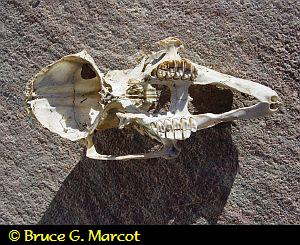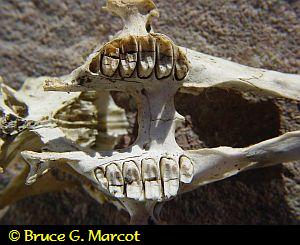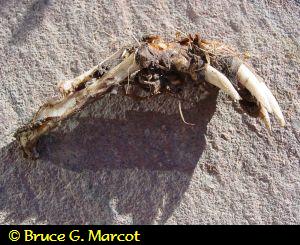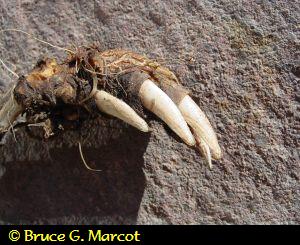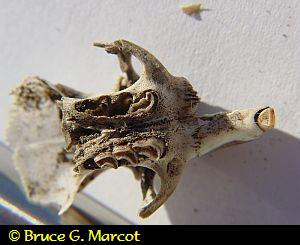Prey Remains of Magellanic Horned Owl (Bubo magellanicus)
at Perito Moreno, Southern Argentina© Bruce G. Marcot, Ana Trejo
18 December 2006
updated 16 September 2007, with corrections on identifications and photo additions from A. TrejoWith thanks to Dr. Ana Trejo for identification and confirmation of the prey remains.
This page links to Marcot's Ecology Picture of the Week page on "Magellanic Horned Owl's Retreat: Nest & Prey Remains." See that page for description of the nests and site location from which I gathered owl pellets for this analysis.Click each image for larger versions.
Typical evidence of feeding by Magellanic Horned Owl:
whole pellets (top) and partially digested mammal pelt (fur) (bottom).
After dissecting the numerous pellets collected at the nest site.
Femurs and other leg bones of rabbits and rodents (left);
lower jaw bones and teeth of various rodents (right).
The lower row of the jaw bones are explained below.
Jaw remains of small rodents
Bunny or Coney Rat, Reithrodon auritus (family Muridae, subfamily Sigmodontinae). Commonly distributed in the "southern cone" of South America from near the Andes crest eastward to the Atlantic.
